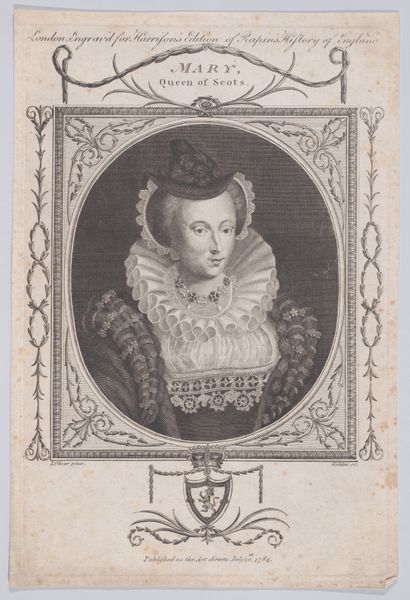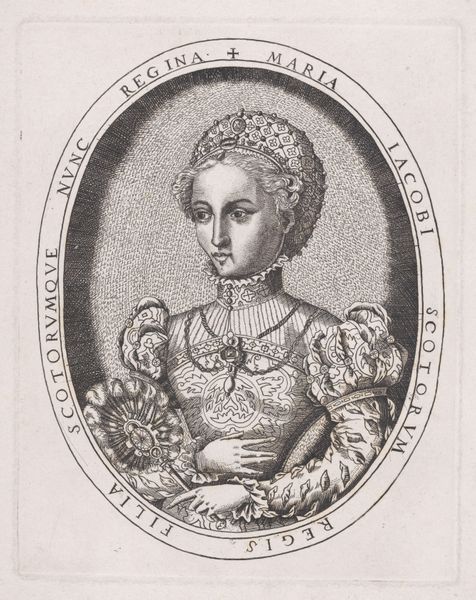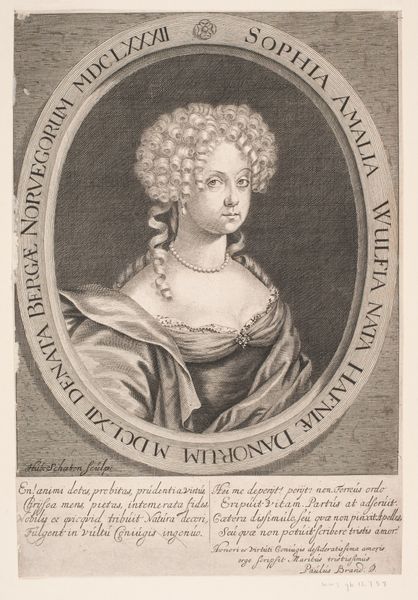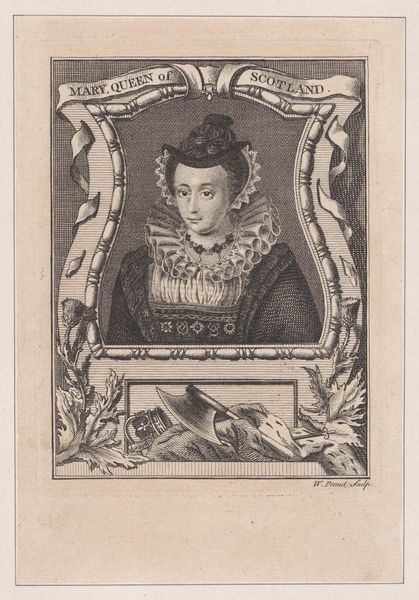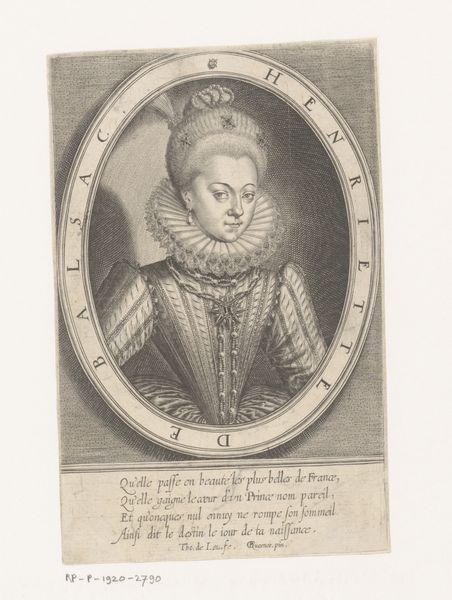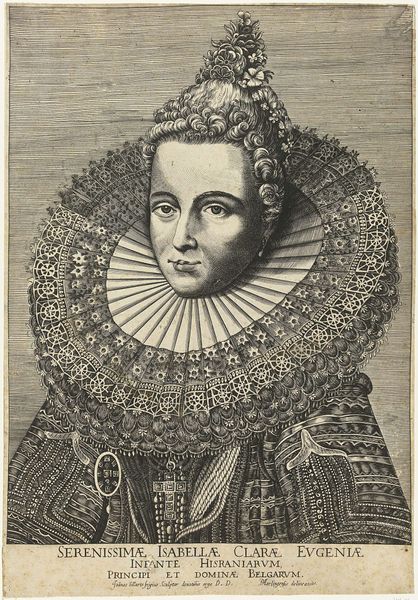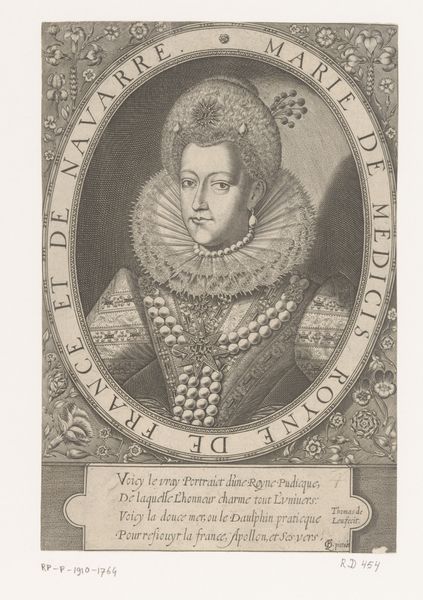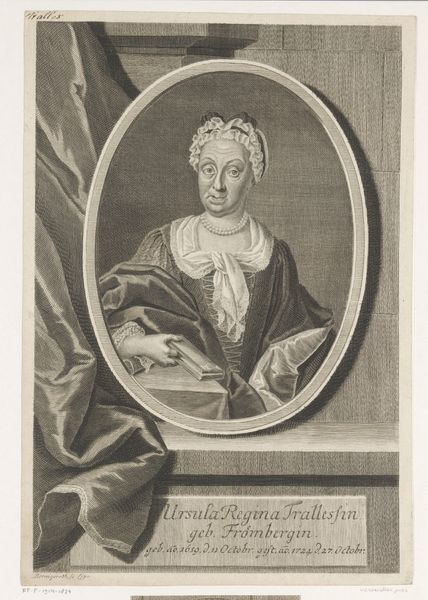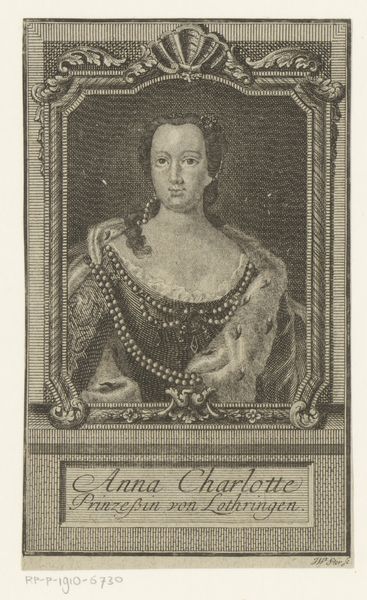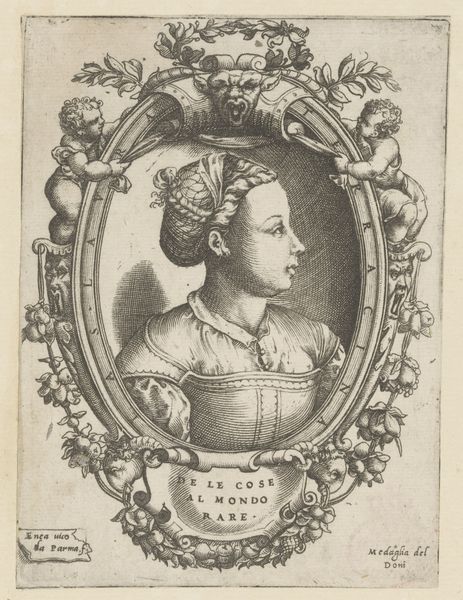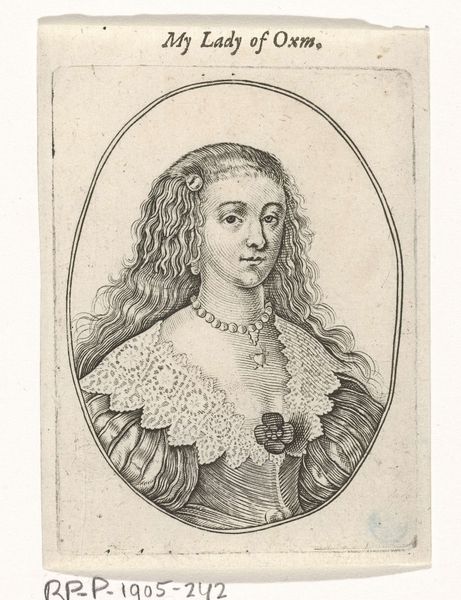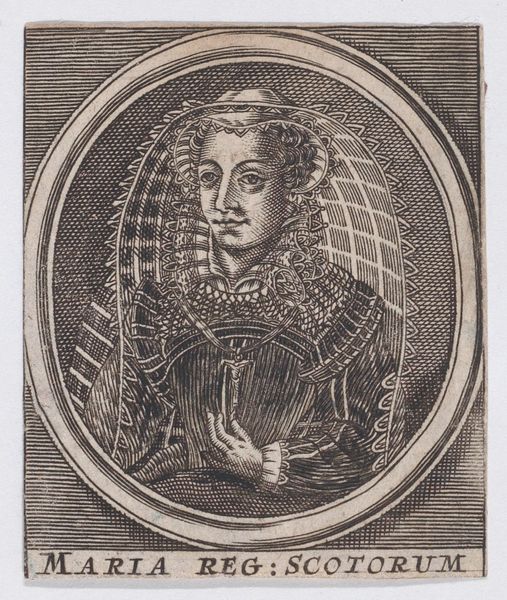
drawing, print, engraving
#
portrait
#
drawing
#
medieval
# print
#
11_renaissance
#
engraving
Dimensions: Sheet: 4 5/16 × 3 5/16 in. (11 × 8.4 cm)
Copyright: Public Domain
Curator: Here we see a portrait engraving of Mary, Queen of Scots, attributed to Isaac Oliver and likely created between 1771 and 1799, long after her execution in 1587. Editor: The image immediately strikes me as melancholic. Despite the regality suggested by her attire, there's a distinct sadness conveyed in her eyes and overall posture. The black and white medium really intensifies that somberness, giving her an aura of almost gothic tragedy. Curator: It’s fascinating how this image persists as a representation of her, centuries after her lifetime. The ruff and jeweled collar – they aren't simply ornamental, they are visual cues to power, status, and even piety during the Renaissance. What do they tell us about her projected persona? Editor: I see it more as a construction of power trying to outlive its historical moment. While these sartorial choices signify nobility, they simultaneously box her in, reflecting the constricted role and limited agency afforded to women, particularly ruling women, in that era. We should also acknowledge the power dynamics in portraits of the elite in early modernity. Were these attempts to reflect inner lives, or carefully planned projections of power meant to reinforce her reign, or at the very least, cement her in the historical narrative? Curator: Absolutely, the image becomes a signifier in itself, imbued with multiple layers of meaning over time. Look at the ornate, decorative border. Ovals have symbolized eternity since ancient times. What feelings did that iconography evoke with period audiences versus for audiences now? Does the print create a symbolic, historical window to consider both who Mary was, as well as how she wanted to be remembered? Editor: Perhaps it serves to perpetuate the myth of Mary, Queen of Scots—a powerful and defiant ruler in the face of impossible circumstances, and also, equally significant, an active agent in defining the historical perceptions of powerful women. Let us remember that in the history of early modernity, politics always relied on stagecraft. Curator: It certainly encapsulates the complexities of identity and legacy—and perhaps serves as a meditation on the performance of power. Editor: I agree. I leaves you pondering what history really remembers, and what it chooses to forget.
Comments
No comments
Be the first to comment and join the conversation on the ultimate creative platform.
